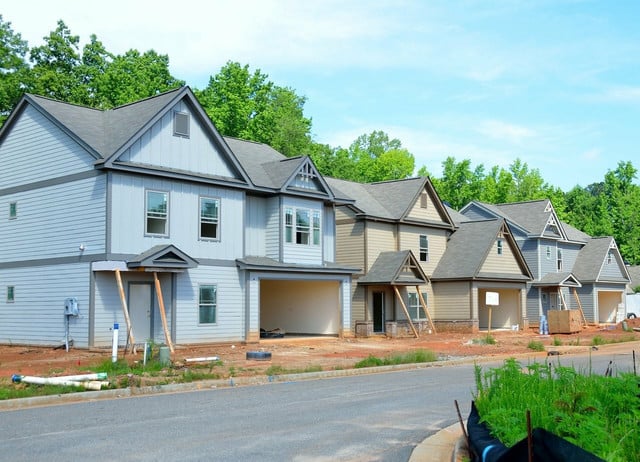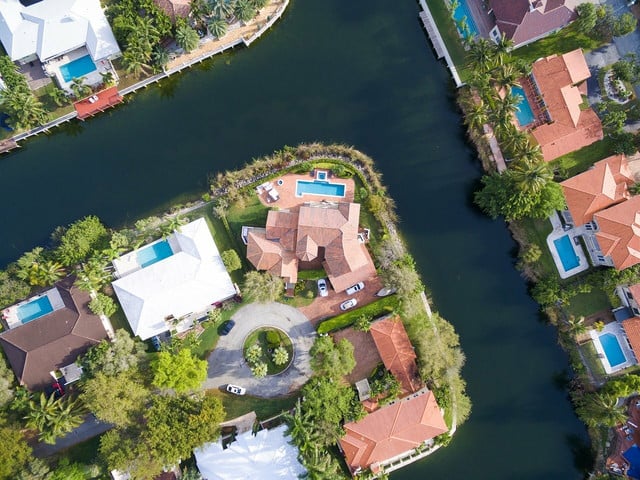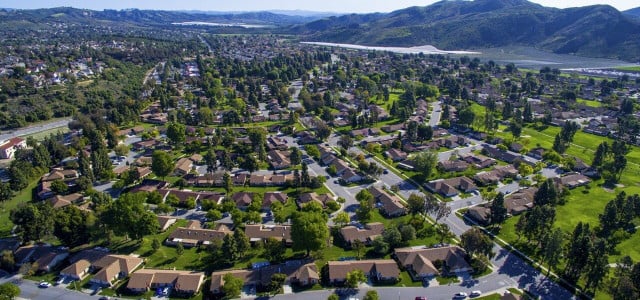Suburban sprawl has many negative effects on human health and the environment. We'll show you the causes, environmental effects, and solutions to sprawl.
Suburban Sprawl Explained
Suburban sprawl is the spread of urbanised areas into the rural landscape. It is the dominant pattern of development in the US, and is characterised by low-density, single family homes built outwards from urban centres. This type of development creates an undefined edge between urban and rural areas. Cities in the US with the most suburban sprawl include Atlanta, Georgia and Dallas, Texas.
For many Americans, living in a suburban neighbourhood is very desirable, with the Pew Research Centre estimating that 55 percent of Americans live in these areas (numbers referring to 2012 – 2016). Indicative of mid 20th century American suburbia, these neighbourhoods reflect the American dream of owning a home with a large yard, in a newly built, low-density suburb. Despite the appeal of suburban living, there are many negative environmental impacts that come with it. Understanding the causes, effects, problems, and solutions to suburban sprawl can educate us on how to build more sustainable communities in the future.
Causes of Suburban Sprawl

(Foto: CC0 / Pixabay / paulbr75)
Sprawl is caused by a mixture of socio-economic and cultural forces. Land value is the most important factor in driving these development patterns, as property values are lower on the edge of urban areas. This means that there is capacity for huge economic profit by developing in rural areas. There are three important factors that interact with land value to cause sprawl:
- Population growth results in the outward expansion of urban centers.
- Rising incomes allow residents to purchase bigger homes.
- Lower commuting costs due to investments in transportation infrastructure allow residents to live in more rural areas.
These factors interconnect with each other to allow for suburban sprawl.
Environmental Effects



(Foto: CC0 / Pixabay / juanngomezz)
Studies have long highlighted the environmental concerns surrounding suburbanisation. These low-density areas have high carbon emissions and are an unsustainable form of growth. According to a UC Berkeley study, carbon footprints of households in large, population-dense city centers are about 50 percent below average, while households in suburbs are up to twice the average. Here are some of the environmental effects of suburban sprawl:
Loss of agricultural land and open space
As land is paved over for new houses, roads and infrastructure, environmentally sensitive areas and ecosystems such as forests and wetlands are destroyed. They are built over, and can never be returned to their natural state. Read more about the importance of protecting forests here.
Air pollution
Suburban sprawl creates a dependancy on cars, as the housing developments are designed for residents to drive rather than walk to even essential destinations such as shops. Emissions from cars are therefore responsible for producing huge amounts of greenhouse gases.
Water pollution
Water pollution is another negative environmental effect of sprawl, as the impervious surfaces block natural water flow. As well as this, most homes have extensive lawns that require pesticides and fertilizers, which run into nearby bodies of water and pollute them.
Solutions to the Environmental Effects
There are some sustainable solutions that can be implemented to improve the negative environmental impacts of sprawl. One of these solutions is smart growth programs, which are management strategies to direct the growth of suburban areas to be more sustainable. Smart growth principles include diverse housing options, lots of green space and multiple transport options such as public transport and bike lanes. The end result of these management strategies includes cleaner air and water, the protection of natural systems and increased quality of life.
If you live in a suburban area, you can make a personal commitment to live in a more environmentally friendly way. Here are some tips that you can implement into your life:
-
Reduce your carbon footprint by walking, cycling or using public transport instead of driving your car.
- Save energy by turning your heating down, and hang your clothes to dry rather than using a tumble dryer.
- If possible, consider powering your home with renewable energy by installing solar panels, as this will reduce the amount of carbon emissions your home produces.
- Support your local land use planning efforts and promote smart growth. Volunteer for your regional land trust who work hard to conserve the environment and protect ecosystems.
Read on:
- The 10 Most Walkable Cities in the US in 2022
- Homemade Deck Cleaner: The Eco-Friendly Method
- How to Start a Community Garden in 8 Steps
Do you like this post?







